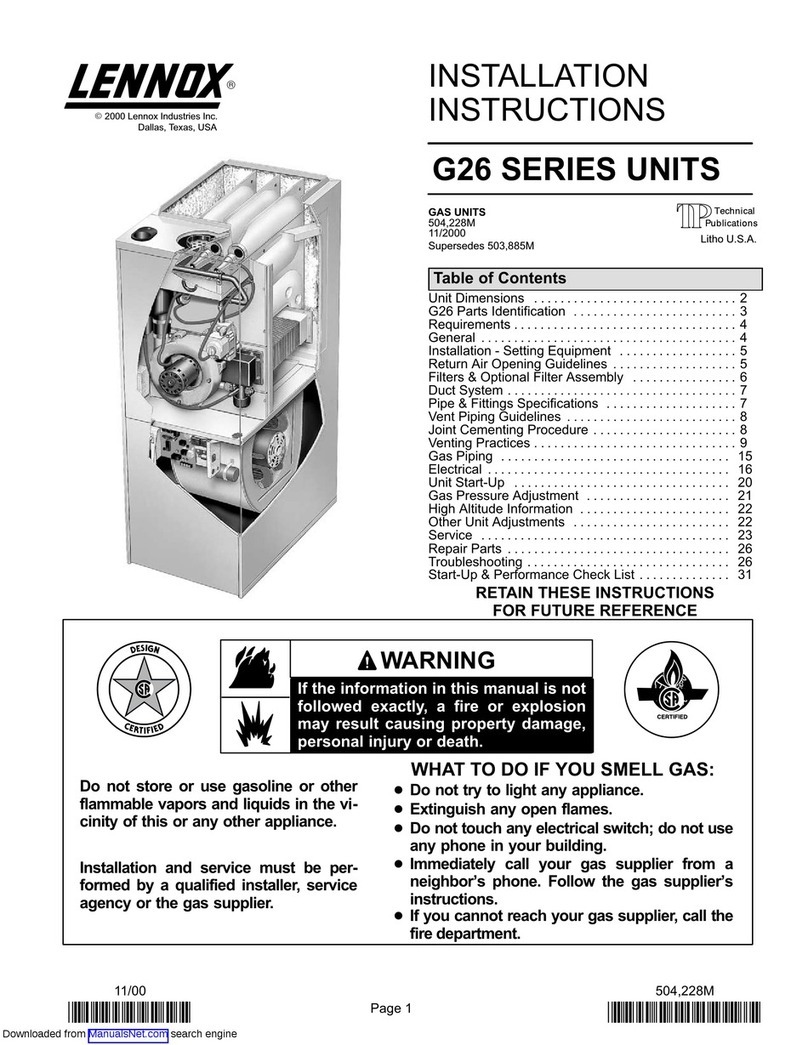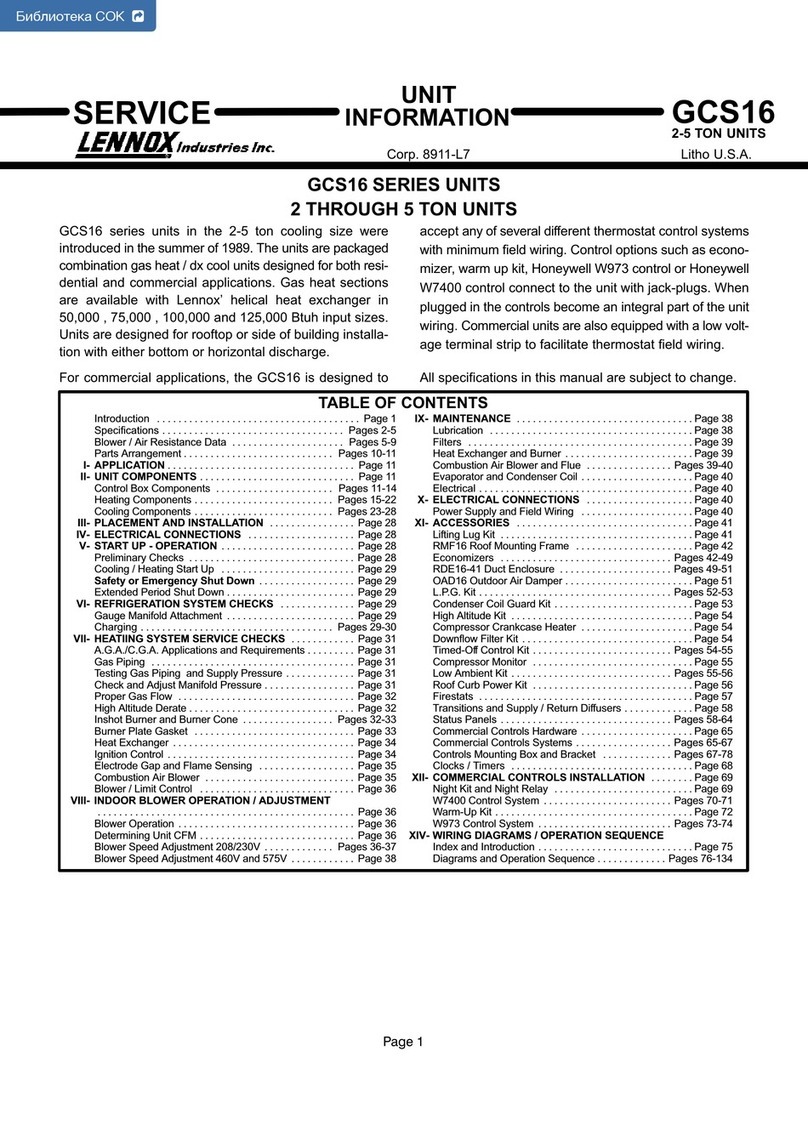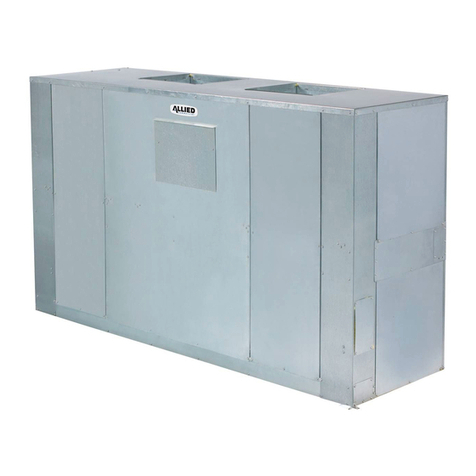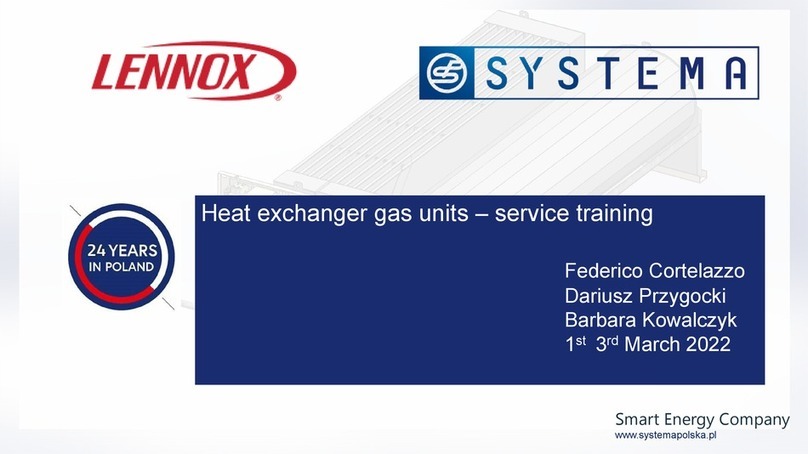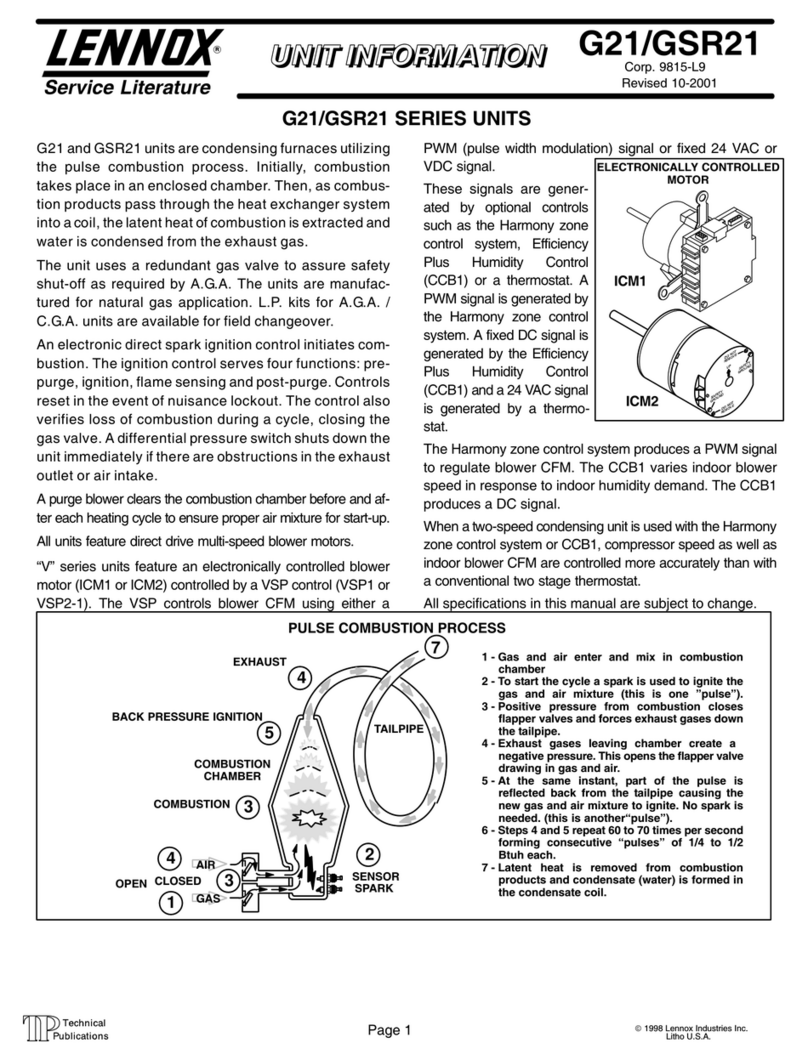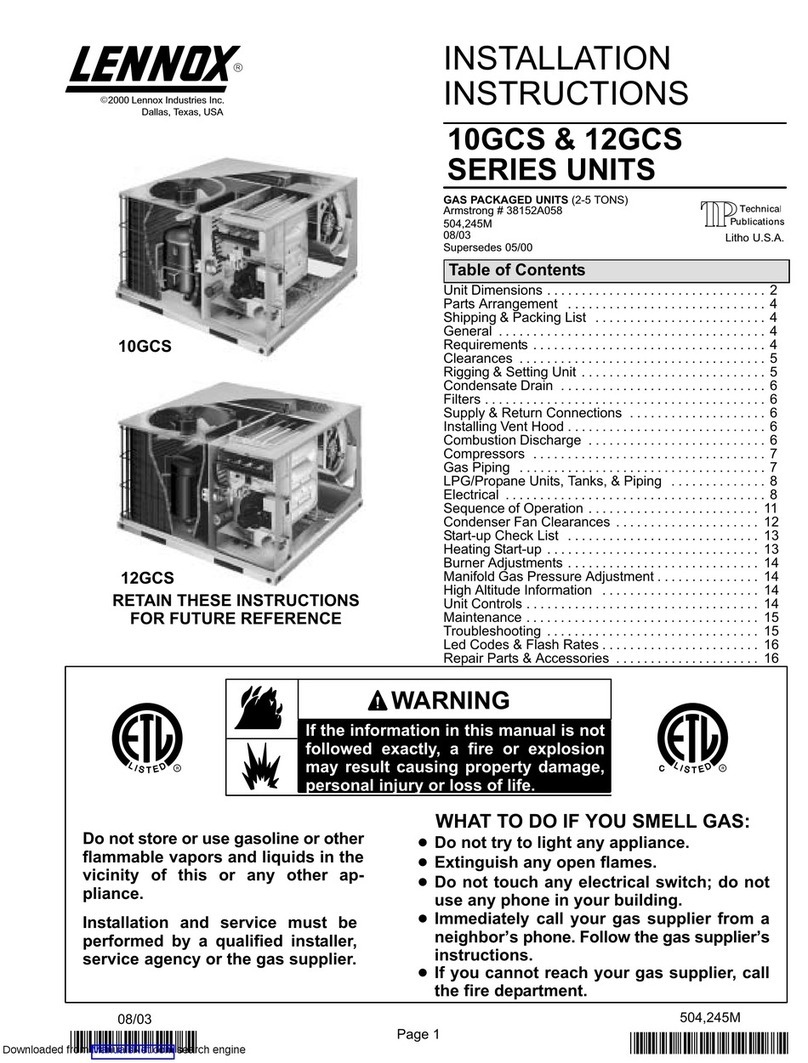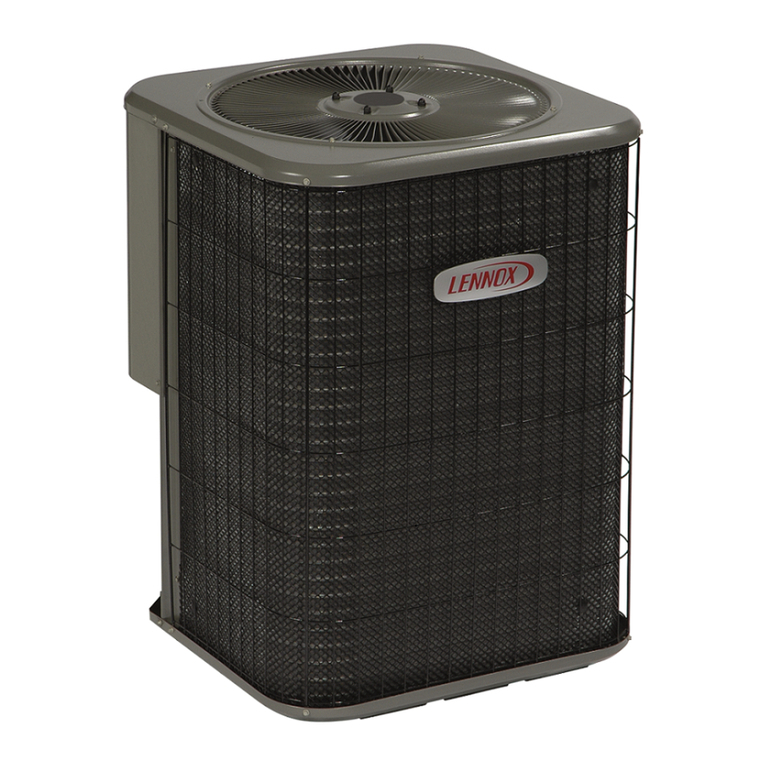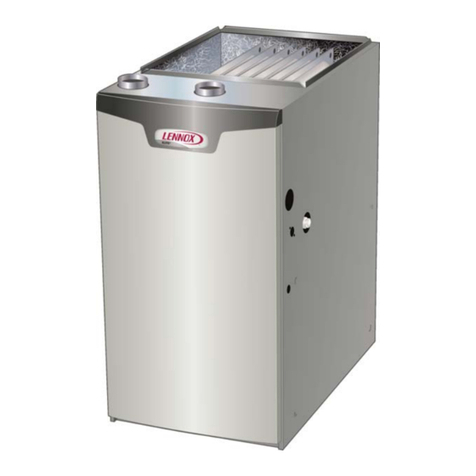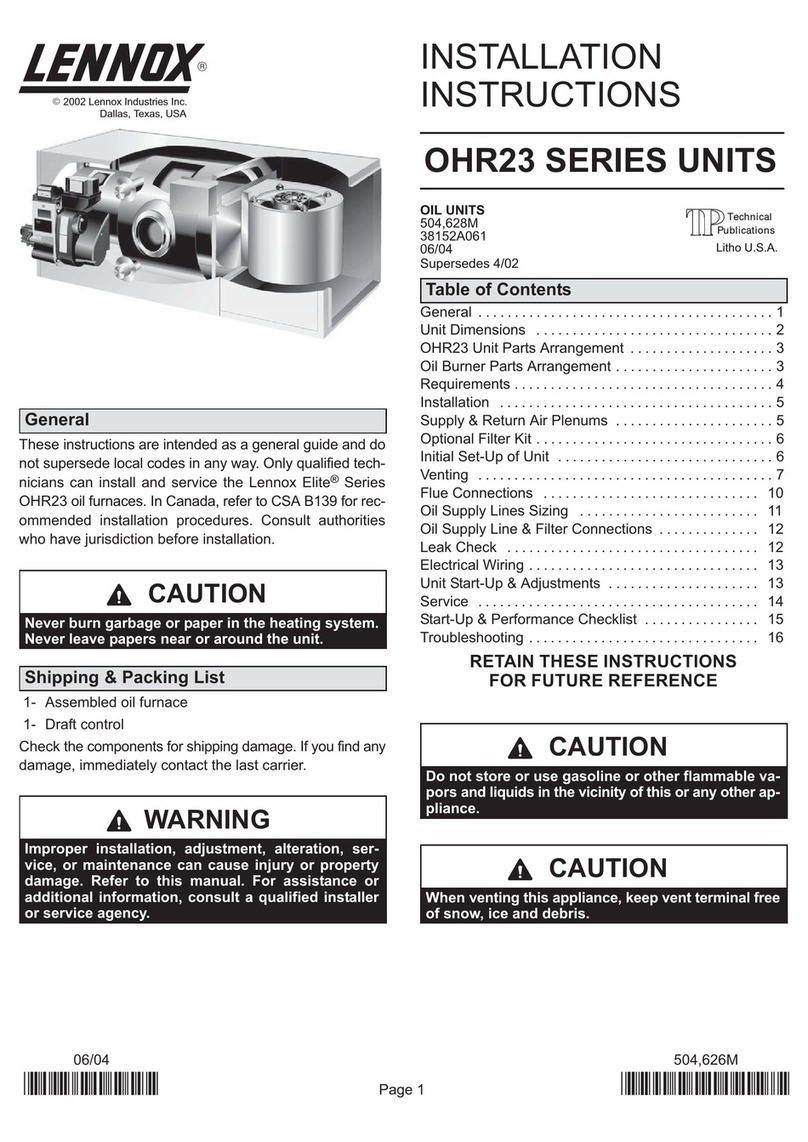
Page 9
Single−Phase Compressor Operation
Checklist
LOW SPEED
1. First−Stage Demand: If all safety circuits check out,
TSC (A14) energizes JP44−9.
2. Contactor K1 and K226 are energized. K1−2 contacts
open to de−energize the crankcase heater. All other K1
contacts close to start outdoor fan and to begin
compressor low speed operation. K226−1 contacts
close to begin compressor low speed operation.
3. Compressor (B1) terminal 1 and the outdoor fan circuit
are energized by K1 contacts L1−T1. Compressor
terminal 7 is energized by contacts K1 terminals L2−T2
and K226 terminals T1−L1. Compressor terminal 8
(low speed start winding) is energized through
contactor K1 terminals L2−T2, through the run and
start capacitors, and to contactor K226−1 terminals
L3−T3.
4. As the compressor nears proper speed, potential relay
K31 energizes and K31 terminals 1–2 open.
HIGH SPEED
1. Second Stage Demand: If all safety circuits check out,
TSC (A14) energizes JP44−8.
2. Contactor K69 energizes and K69−2 auxiliary contacts
close to energize contactor K1 coils and de−energize
K226 contactor coil. K1−2 contacts open to
de−energize the crankcase heater. K1 contacts L1−T1,
L2−T2 and L3−T3 close, while K226 contacts L1−T1
and L3−T3 open.
3. Compressor (B1) terminal 3 (high speed start winding)
is energized by contactor K1 terminal L2−T2, through
the run and start capacitors and through contactor K69
terminals L3−T3. Compressor terminal 2 is energized
by contactor K1 terminal L2−T2. Compressor terminal
7 is energized by K1 contactor terminals L1−T1
through contactor K69 terminals L1−T1.
4. As the compressor nears proper speed, potential relay
K31 energizes and K31 terminals 1–2 open.
Three−Phase Compressor Operation
Checklist
LOW SPEED
1. First Stage Demand: Low speed (Y1) room thermostat
demand energizes outdoor fan relay and JP44−6.
K10−1 switches to energize the outdoor fan and
de−energize the compressor crankcase heater.
Outdoor fan begins operating immediately.
2. If all safety circuits check out, TSC (A14) energizes
JP44−9. Contactor K1 coil is energized through K69−2
NC end switch contacts.
3. After appropriate time delay, K1 contacts close to
cycle compressor onto low speed. K226 contacts
remain open to disconnect the high speed wiring
circuitry.
4. Compressor (B1) terminal 1 is energized by K1
terminal L1−T1. Compressor terminal 2 is energized by
K1 terminals L2−T2. Compressor terminal 3 is
energized through K1 terminal L3−T3.
HIGH SPEED
1. Second Stage Demand: High speed (Y2) room
thermostat demand energizes JP44−4.
2. If all safety circuits check out, TSC (A14) energizes
JP44−8.
3. Contactors K69 and K226 energize through K1−2 end
switch contacts. K69 and K226 contactor coils close
for compressor high speed operation. Compressor
terminal 4 is energized by contactor K69 terminals
L1−T1. Compressor terminal 6 is energized by
contactor K69 terminals L2−T2. Compressor terminal
5 is energized by K69 contactor terminals L3−T3.
Compressor terminals 1, 2 and 3 are connected
through K226 contacts L1−T1 and L3−T3.
